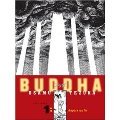
Like Laurie R. King's Mary Russell novels, time and place are central to Elizabeth Peters' novels featuring Amelia Peabody. Like Russell, Peabody is fiercely independent and confident in her abilities, in spite of having spent much of her life under the thumb of her domineering father in 1880s Victorian England. In Crocodile on the Sandbank, Peabody immediately sets out for Egypt, determined to see more of the world after her father's death. Immediately at home in the Valley of the Kings, Peabody sets to work 'assisting' Egyptologist and bachelor Radcliff Emerson, much to his displeasure. Their work is soon interrupted by the appearance of a mummy that drives away all the Egyptian workers and threatens the lives of Peabody and her companions. I found the mystery to be a little hokey (the rampaging mummy kept bringing to mind the Brendan Fraser film The Mummy) and an annoying damsel in distress that everyone would probably be better off without. But Peabody herself is a plucky, appealing character, and her battles with Emerson are enjoyable to behold, even if you already know who's going to come out victorious.
It's not surprising that Peters also did quite a bit of work in romance fiction, as the strength of her book lies not in the mystery (which is quite easy to figure out), but in the sparks between her characters. Originally published way back in the 1970s, Crocodile is the first of Peters' long Peabody series, all set in colonial Egypt. The exotic time and place of the series is also one of its draws, and the fast moving plot and romantic undertones makes Peters' detective an appealing read.














.jpg)